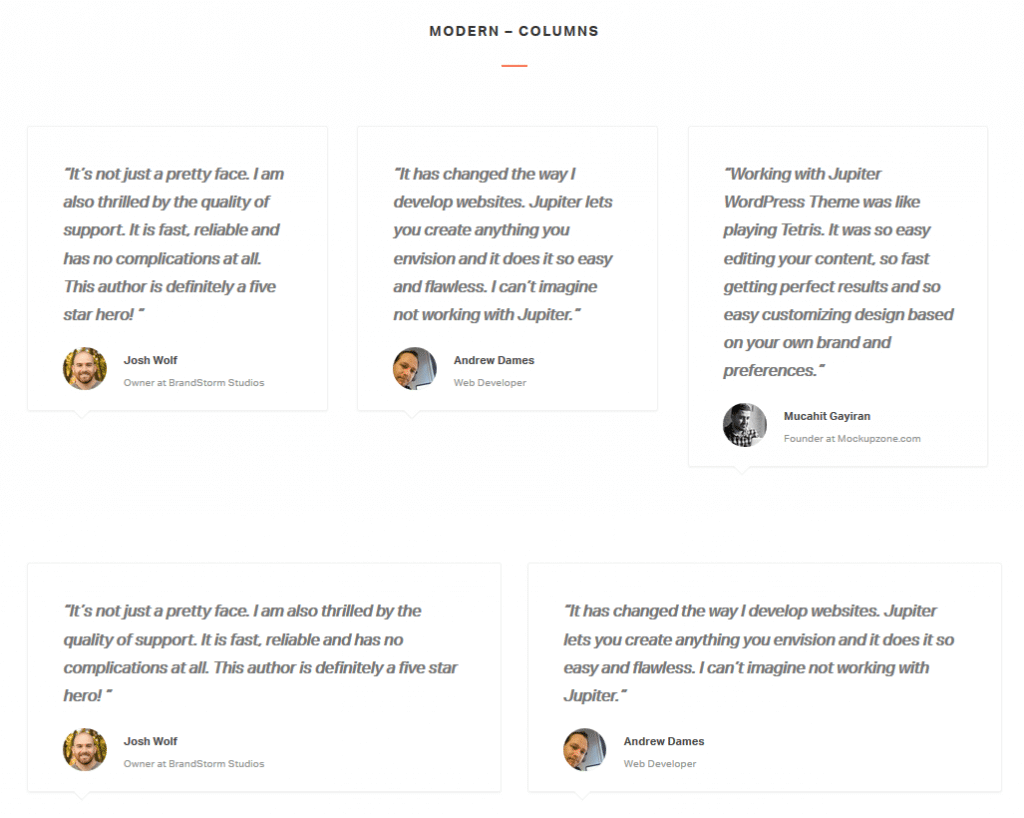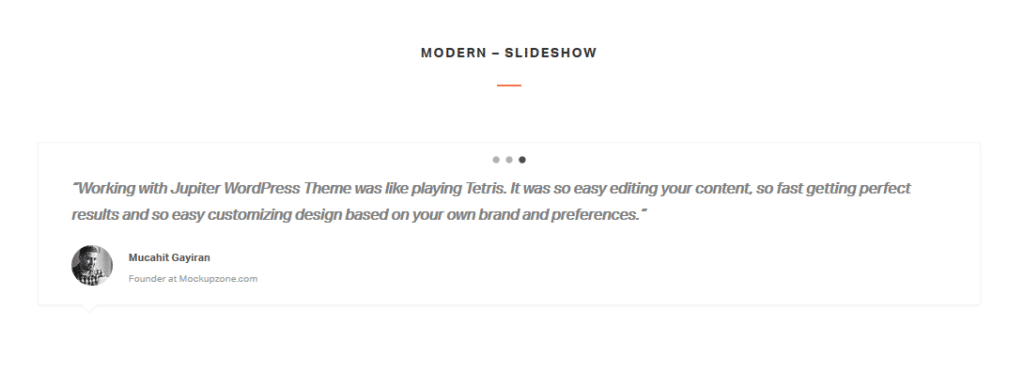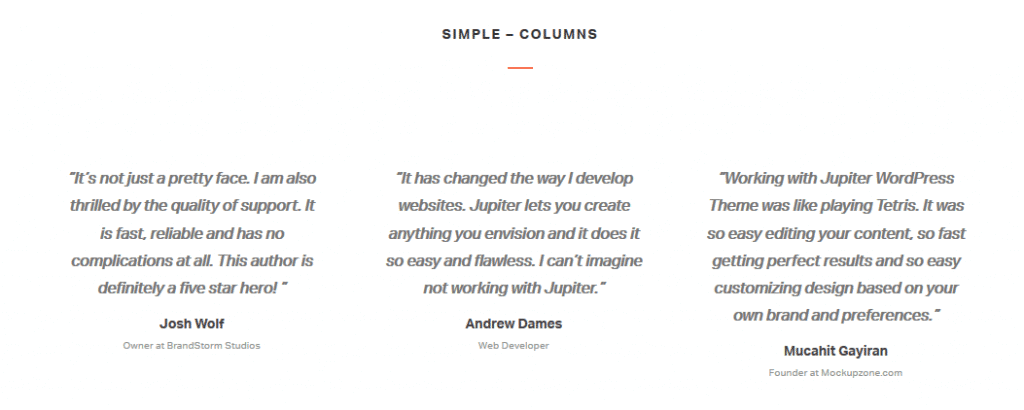Testimonials from your previous or existing clients are important in establishing credibility, especially when you’re just starting to build your brand. Customers are the best brand ambassadors and promoters because they’ve actually used your product or service. Your prospects can relate better to them than celebrities who are paid to endorse your brand.
The words from real people who used your brand can put down the guards of your prospects who might be reluctant to try your products or services. The purpose of customer testimonials is to build trust so it should never, ever be written by the website owner or designer. It should be solicited from actual clients to maintain your brand’s authenticity and integrity.
But, what should your testimonial contain? Here are some important elements of Customer Testimonials for WordPress you need to consider before you start soliciting testimonials from your clients.
Elements of an Effective Client Testimonial
-
Short and Sweet
The quality of the words in your client’s testimonials is more important than its length. Use feedbacks that are short but convincing. Your prospects only need to know that you are worth trusting. If you have to place a long story, you can link it instead so that visitors who want to know more can just navigate.
-
Use the “BDA” Format
People love stories. Formatting your testimonials in a BDA (before, during, and after) format delivers the stories of your previous clients to your prospects.
Your testimonials should contain the situation of your clients before they used your product and the changes they experienced during and after they used your product or service. Using this format can reveal the pain points of your past clients which your prospects also experience.
Prospective customers will be able to trust your brand more easily if they see that you solved the problems of your past clients and that you can solve their problems too.
-
Originality
Show that your product is unique even through the design of your clients’ testimonials. If you truly stand out from your competitors, it should show in the feedbacks from your clients. Avoid generic sounding testimonials because these aren’t really effective. Your prospects should not only read that your brand is great, they should read why your brand is great.
-
Natural Language
This is the only section of your website where you can loosen up on editing. The testimonials should come from real people- real people speak differently. The raw feedbacks express your sincerity. Publish your clients’ testimonials in verbatim as long as it is appropriate. Allow your prospects to read the testimonials in the tone of your customers, not you.
-
Visual Design
As much as the quality of the words in the testimonials counts, visual appeal is also important. Jupiter Testimonial Shortcode has several designs you can choose from to effectively represent your brand. The Jupiter testimonial element styles include avant guard, boxed, simple, and modern.
-
Image of the actual client
Research has shown the effectiveness of people’s pictures on your website; more so with your client’s testimonials. Pictures prove the authenticity of the testimonials. It shows that the words come from a real person.
-
Credentials
You are claiming that the statements come from your clients; you have to prove that with their credentials. Anonymity is really not an option if you want your testimonials to be genuine and authentic. Include their name, position, and company. The testimonial shortcode in Jupiter allows you to include your client’s credentials easily.
You want to show your prospects that these are real testimonials from real, live people! Just remember to ask for permission first.
-
Social Proof
Establish your credibility further by adding a social proof to your client’s testimonial; so that clients and prospects to be able to supplement their research about your company. By going to the social media page of your client, they can see the type of businesses of your previous clients. It helps to show them your range of influence and expertise.
How to Get Testimonials from your Clients
Before you can publish a quality testimonial on your website, you have to gather your clients’ feedback first. To elicit good responses, you have to create specific questions. You can use several formats.
It can be in the form of a simple email, a pdf file that clients can fill out, or a google form they can answer. Either way, it should contain relevant questions so you can lift their words in verbatim. You do not need to place all of their answers on your testimonial page. Just pick out the most striking and relevant answers which your prospects can relate to.
7 Questions to Ask to Get a Good Testimonial
We’ve rounded up 7 significant questions to help you guide your clients into telling a great story about their relationship with your brand.
- Please describe your situation or problem before our product or service.
- What hesitations did you have before buying our product or service?
- What is your favorite feature from our product or service?
- Please describe your situation after using our product or service. What benefits did you gain?
- How would you describe our level of service?
- Would you recommend our product or service? If so, why?
- Can we use your feedback, along with your name and credentials for our marketing materials and website?
Bottom Line
A testimonial is a great way to grow more customers without adding to your marketing cost. Use the guidelines mentioned above and the Testimonials Shortcode in Jupiter to create a client feedback page that is relevant and attractive.
Ask for feedback, not for a testimonial. The word testimonial can be intimidating to clients and they won’t be able to deliver their natural responses. This way, your testimonial can be more genuine, and you can also get insight from your customers on your areas for improvement. Hit two birds with one stone, right? Click on the link for a step-by-step tutorial on the Jupiter Testimonial Shortcode.











No comment yet, add your voice below!